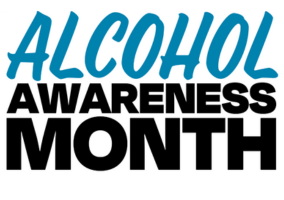
I frequently train on topics related to drugs and alcohol. As a part of that training, I talk about alcohol use. I mention that almost two-thirds of the people in the United States consumed alcohol in the past year. About ten percent of the population meets the diagnostic criteria for Alcohol Use Disorder (AUD), and 37 people died per day in 2021 in alcohol-impaired driving traffic deaths. That was a 14% increase from 2020, during which there was a 14% increase from 2019. Many attendees have heard that overdose deaths linked to opiates exceeded 107,000 last year but are surprised when I mention that approximately 140,000 people die per year from alcohol-related causes!
The good news for those who drink is that you can reduce your risk of having an alcohol use disorder by following some simple guidelines. To reduce your risk of having an alcohol use disorder, men should consume no more than four drinks per day and no more than 14 drinks per week, while women should drink no more than three drinks per day and no more than seven drinks per week. Individuals who never exceed the daily or weekly have a minimal risk of developing a use disorder. Those who exceed the daily limit increase their risk to 20%, while those who exceed the daily and weekly limits have a 50% risk of developing a problem with dependence or abuse.
The most common questions I get at this point in a presentation are “How do I know if I or someone I care about has a drinking problem?” or “What are the signs of a drinking problem?” The common signs of drinking problems include the following:
- Drinking more than intended and drinking longer than planned.
- Efforts to control, cut down, or stop drinking have failed.
- The quantity of alcohol needed to achieve the desired effect has increased (tolerance)
- Increasing amounts of time and energy are dedicated to getting or consuming alcohol and recovering from alcohol use.
- Continued alcohol consumption despite damage to meaningful relationships.
- Cravings to drink are becoming persistent and stronger.
- Alcohol use leads to difficulties in your home, at school, at work, or with your physical or mental health.
- Letting go of previously important activities and relationships that interfere with drinking.
- Your drinking creates hazardous situations (driving drunk).
- When you attempt to stop or reduce your drinking, you experience withdrawal symptoms.
When I talk with people privately about a loved one’s drinking, I boil this down to two simple statements. If a loved one asks you not to get drunk, that is a strong warning sign, and you sincerely promise that you won’t get drunk. Despite your heartfelt promise, you drink to drunkenness, which is a loss of control and is a significant warning sign. If when you drink, your drinking causes serious negative consequences (family conflict, fights, car accidents), and despite those negative consequences, you continue to drink, that is a second meaningful warning sign. When both warning signs are present, it is time to talk with a professional knowledgeable about addictions.
Call to Action
Complete an assessment!

Call for Help
Contact your Employee or Member Assistance Program and ask to speak with a counselor who is familiar with alcohol and other addictions.
Call Alcoholics Anonymous @ (212) 870-3400 or visit their website.
- http://www.alcoholics-anonymous.org/index.html (general)
- http://www.alcoholics-anonymous.org/pro/engpro.html (information for professionals)
You can also visit “FindTreatment.gov” and enter your address and the distance your willing to travel to treatment and the locator will provide a list of treatment providers near you.
Ask questions! Here are some suggested questions.
- How soon can I get an appointment?
- Are you in-network for my insurance? How much will I have to pay? These are important questions, do not accept vague answers.
- What should and shouldn’t I bring?
- If you don’t have a way to get to the facility, do they have someone who can drive you?
- Is there programming or services for my family?
- Can I have visitors?
- Is smoking important to you?
No matter what the treatment program tells you, verify with your insurance carrier that the treatment facility is in your insurance network.
